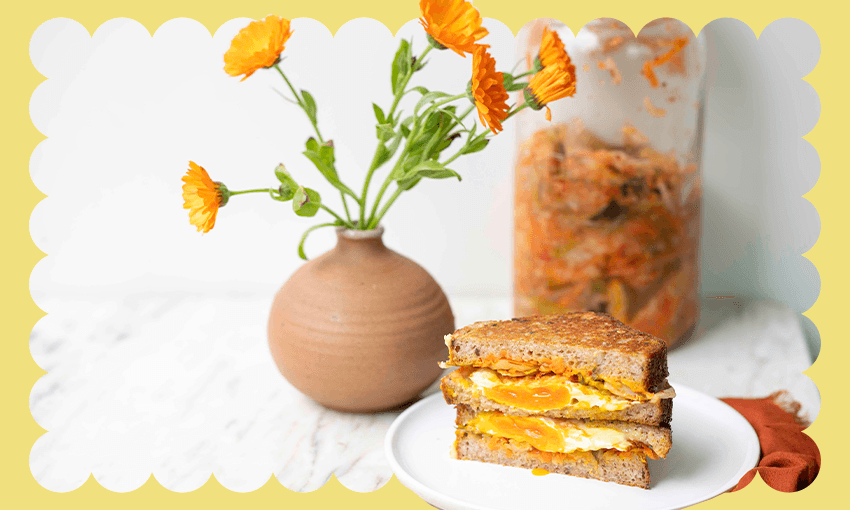Everyone knows how to make a toastie, but this one is a little bit elevated.
This is lunch for one though of course if you’d like to share just double or triple to accommodate additional hungry mouths. I love the simplicity of this recipe and the way that the flavours come together. The bold umami flavours of the kimchi work so well with the creamy egg and the tangy, salty cheese. And you can feel virtuous knowing that lunch consists of some veg, some protein and a good dose of something fermented.
INGREDIENTS
Butter
1 egg
2 slices sourdough bread
Tasty cheese, sliced
Kimchi
METHOD
Melt a little butter in a heavy-bottomed frying pan and fry the egg on both sides until almost cooked through. Butter both slices of bread and place one butter-side-down onto a toasted sandwich maker. Top with the slices of cheese, the fried egg and lastly a generous serve of kimchi. Top with the second slice of bread, butter-side-up and toast until golden brown and the cheese is melted. Serve immediately.





